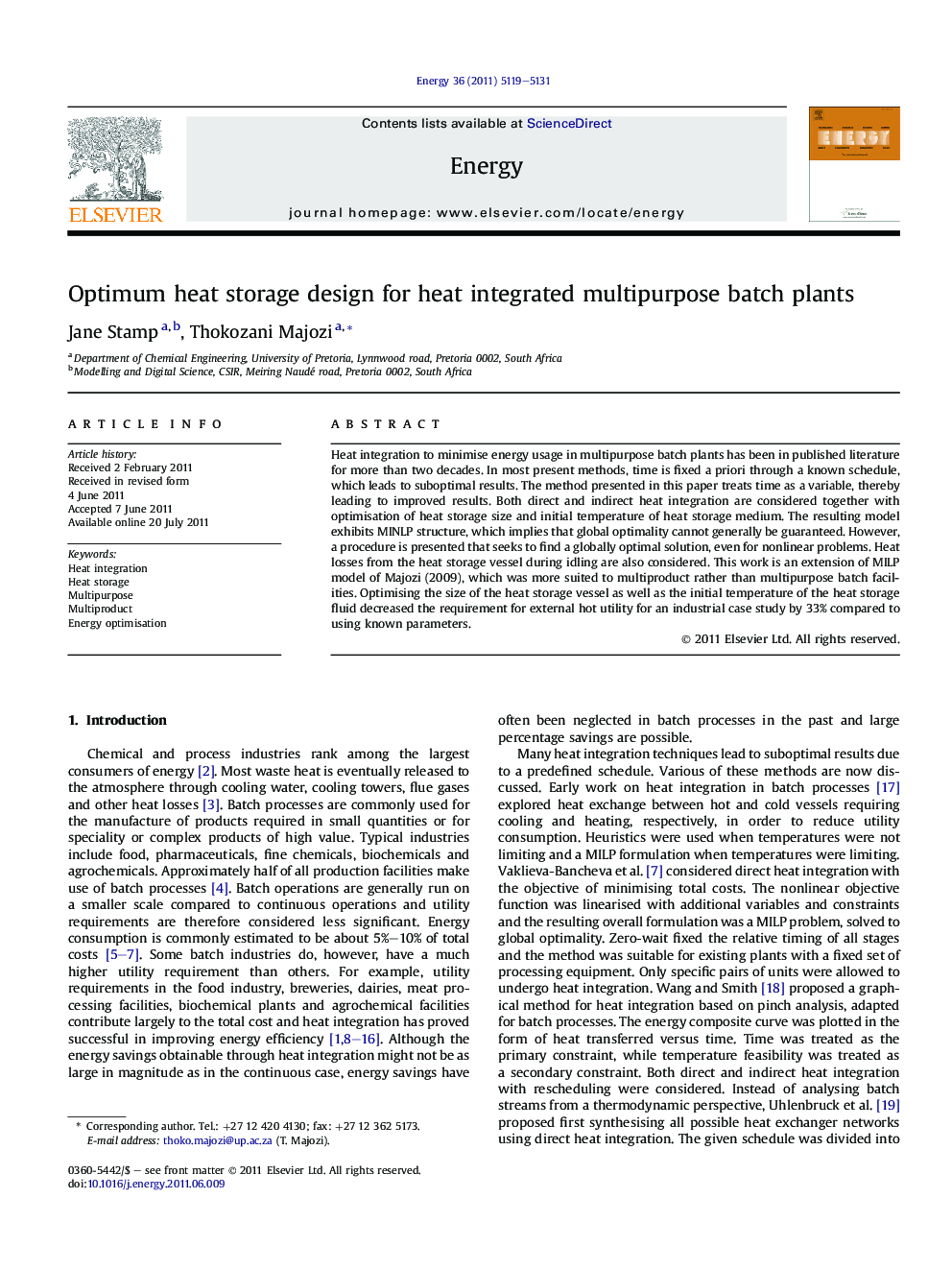| Article ID | Journal | Published Year | Pages | File Type |
|---|---|---|---|---|
| 1734275 | Energy | 2011 | 13 Pages |
Heat integration to minimise energy usage in multipurpose batch plants has been in published literature for more than two decades. In most present methods, time is fixed a priori through a known schedule, which leads to suboptimal results. The method presented in this paper treats time as a variable, thereby leading to improved results. Both direct and indirect heat integration are considered together with optimisation of heat storage size and initial temperature of heat storage medium. The resulting model exhibits MINLP structure, which implies that global optimality cannot generally be guaranteed. However, a procedure is presented that seeks to find a globally optimal solution, even for nonlinear problems. Heat losses from the heat storage vessel during idling are also considered. This work is an extension of MILP model of Majozi (2009), which was more suited to multiproduct rather than multipurpose batch facilities. Optimising the size of the heat storage vessel as well as the initial temperature of the heat storage fluid decreased the requirement for external hot utility for an industrial case study by 33% compared to using known parameters.
► Optimising heat storage size and initial temperature may decrease utilities. ► Heat losses from an idle storage tank increase with increased temperatures. ► Exploring both direct and indirect heat integration opportunities improves results. ► The processing schedule and heat integration are optimised simultaneously.
